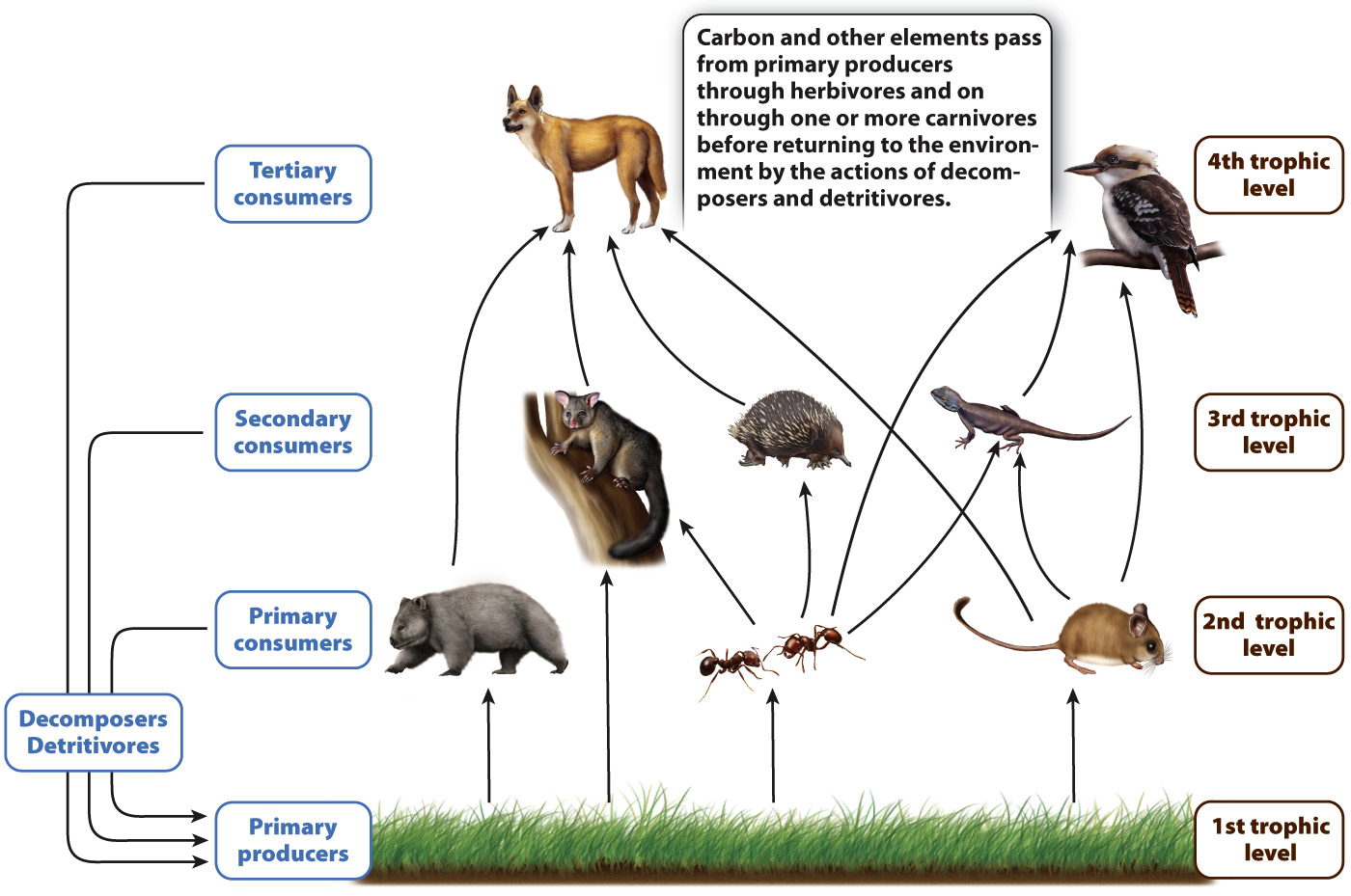Species interactions result in food webs that cycle carbon and other elements through ecosystems.
Of all the interactions observed among species, none are more prominent than predation and herbivory. Heterotrophic organisms, from bacteria to blue whales, obtain carbon and other elements needed for growth from other organisms. Thus, when a sea star preys on a mussel, we can view this interaction both as predation and as a link in the carbon cycle. Heterotrophic organisms commonly consume other heterotrophs, but, ultimately, ecosystem function depends on autotrophs—
In ecology, photosynthetic and chemosynthetic organisms are known as primary producers, organisms that take up inorganic carbon, nitrogen, phosphorus, and other compounds from the environment and convert them biochemically into proteins, nucleic acids, lipids, and more (Chapter 25). Consumers, heterotrophic organisms of all kinds, depend on primary production, directly consuming primary producers or consuming those that do. Predators hunt and eat prey, herbivores eat plants, and parasites infect their hosts. Decomposers such as certain bacteria and fungi are a special class of consumer, breaking down the molecules of primary producers and consumers and returning the carbon they contain to the atmosphere through respiration.
1037
The various species present in an ecosystem can therefore be placed in an order that describes how one organism feeds on another, moving carbon (and other nutrients) through the system. This order is commonly depicted as linear, and it is called a food chain. In nature, however, every species is connected to many others. Many ecologists also stress that most communities contain species that are omnivorous, eating both plants and animals. For these reasons, the movement of carbon through an ecosystem is more realistically thought of as a food web (Fig. 47.16).

An organism’s typical place in a food web is its trophic level (Fig. 47.16). The first trophic level consists of primary producers; consumers occupy the levels above the first trophic level. At the second trophic level are primary consumers; these are the herbivores, organisms that eat plants or other primary producers. Predators, organisms that eat other consumers, are secondary consumers, at the third trophic level and potentially higher levels as well. Top or apex predators, which have few, if any, natural predators, occupy the highest trophic level. Parasites exploit all levels of the system, obtaining carbon and other nutrients from primary producers and consumers alike. Finally, there are the all-